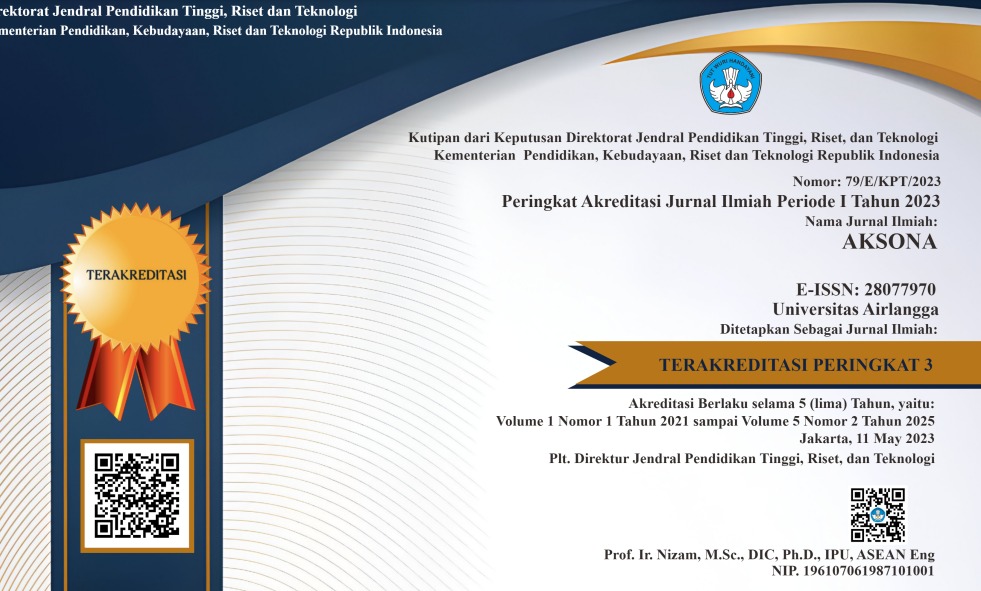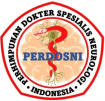Refractory Hyponatremia due to Systemic Infection: A Systematic Review
Downloads
Highlight:
- Hyponatremia is a potentially life-threatening condition.
- Refracter hyponatremia can be seen in patients with systemic infection who have undergone therapy.
ABSTRACT
Introduction: Hyponatremia is a condition in which the sodium serum level is below the normal range. This condition is most common in hospitalized patients receiving systemic infection therapy and can lead to worse outcomes, potentially life-threatening.Objective: This study aimed to summarize the incidence of refractory hyponatremia due to systemic infection therapy. Methods: This was a systematic literature search conducted in October 2023 on the online database PubMed regarding refractory hyponatremia due to systemic. The analysis excluded narrative reviews, non-English studies, and studies that only discussed transient hyponatremia or local infections. Results: A total of 10 case reports of 11 patients were included in the final analysis. The mean age of patients was 46.63 years (SD = 20.79 years), and 63.64% were male. Strongloides stercoralis hyperinfection was the most common cause of systemic infection (54%). It was followed by disseminated Varicella-zoster virus infection (28%), tuberculosis (9%), and systemic nocardiosis (9%). The most common cause of immune compromise is stem cell transplant recipients (28%), followed by miliary tuberculosis (18%). Up to 91% of cases are caused by the syndrome of inappropriate antidiuretic hormone (SIADH), which is the pathophysiology of hyponatremia. Conclusion: Most patients with systemic infections and refractory hyponatremia have conditions that encourage immune compromise. The treatment of systemic infections is a priority since they contribute to hyponatremia.
Walker MD. Fluid and electrolyte imbalances: Interpretation and assessment. J Infus Nurs. 2016; 39(6):382–6. doi: 10.1097/NAN.0000000000000193
Albeladi FI, Wahby Salem IM, Albandar AA, Almusaylim HA, Albandar AS. Electrolyte imbalance in infectious disease patients at King Abdulaziz Hospital, Jeddah. J Taibah Univ Med Sci. 2022; 17(2):256–63. doi: 10.1016/j.jtumed.2021.09.010
Keshwani M, Karim HMR, Nagalikar S, Kumar Biswal D, Dey S. Elderly with refractory chronic severe hyponatremia and anesthesia management dilemma: A case report with literature review. Geriatr Care. 2021; 7(3). doi: 10.4081/gc.2021.9911
Buffington MA, Abreo K. Hyponatremia: A review. J Intensive Care Med. 2016; 31(4):223–36. doi: 10.1177/0885066614566794
Lindner G, Schwarz C, Haidinger M, Ravioli S. Hyponatremia in the emergency department. Am J Emerg Med. 2022; 60:1–8. doi: 10.1016/j.ajem.2022.07.023
Królicka AL, Kruczkowska A, Krajewska M, Kusztal MA. Hyponatremia in infectious diseases—A literature review. Int J Environ Res Public Health. 2020; 17(15):5320. doi: 10.3390/ijerph17155320
Liamis G, Milionis HJ, Elisaf M. Hyponatremia in patients with infectious diseases. J Infect. 2011; 63(5):327–35. doi: 10.1016/j.jinf.2011.07.013
Arzuaga JA, Estírado E, Roman F, Perez-Maestu R, Masa C, de Letona JML. Syndrome of inappropriate antidiuretic hormone secretion and herpes zoster infection: 1. Report of this association in a patient suffering from AIDS. Nephron. 1994;68(2):262–4. doi: 10.1159/000188269
Au WY, Ma SY, Cheng VCC, Ooi CGC, Lie AKW. Disseminated zoster, hyponatraemia, severe abdominal pain and leukaemia relapse: Recognition of a new clinical quartet after bone marrow transplantation. Br J Dermatol. 2003; 149(4):862–5. doi: 10.1046/j.1365-2133.2003.05656.x
Dass R, Nagaraj R, Murlidharan J, Singhi S. Hyponatraemia and hypovolemic shock with tuberculous meningitis. Indian J Pediatr. 2003; 70(12):995–7. doi: 10.1007/BF02723828
Ohara F, Kobayashi Y, Akabane D, Maruyama D, Tanimoto K, Kim S, et al. Abdominal pain and syndrome of inappropriate antidiuretic hormone secretion as a manifestation of visceral varicella zoster virus infection in a patient with non‐Hodgkin’s lymphoma. Am J Hematol. 2007; 82(5):416–416. doi: 10.1002/ajh.20827
Chowdhury D, Dhadham G, Shah A, Baddoura W. Syndrome of inappropriate antidiuretic hormone secretion (SIADH) in strongyloides stercoralis hyperinfection. J Glob Infect Dis. 2014;6(1):23–7. doi: 10.4103/0974-777X.127945
Mutreja D, Sivasami K, Tewari V, Nandi B, Nair Gl, Patil S. A 36-year-old man with vomiting, pain abdomen, significant weight loss, hyponatremia, and hypoglycemia. Indian J Pathol Microbiol. 2015; 58(4):500–5. doi: 10.4103/0377-4929.168871
Khushman M, Morris MI, Diaz L, Goodman M, Pereira D, Fuller K, et al. Syndrome of inappropriate anti-diuretic hormone secretion secondary to strongyloides stercoralis infection in an allogeneic stem cell transplant patient: A case report and literature review. Transplant Proc. 2017 ;49(2):373–7. doi: 10.1016/j.transproceed.2016.12.012
Melexopoulou C, Pavlopoulou ID, Zormpala A, Daikos GL, Boletis JN, Marinaki S. Syndrome of inappropriate antidiuretic hormone secretion complicating systemic nocardiosis in a renal transplant recipient: A case report. Transplant Proc. 2017 ;49(10):2368–71. doi: 10.1016/j.transproceed.2017.09.015
Tariq H, Kamal MU, Reddy P, Bajantri B, Niazi M, Matela A, et al. Anemia, intractable vomiting, chronic diarrhea, and syndrome of inappropriate antidiuretic secretion: A diagnostic dilemma. Medicine (Baltimore). 2017; 96(52):e9229. doi: 10.1097/MD.0000000000009229
Saradna A, Shenoy A, Ambesh P, Kamholz S. Strongyloides hyperinfection and miliary tuberculosis presenting with syndrome of inappropriate antidiuretic hormone secretion in a malnourished patient. Cureus. 2018; 10(3):e2349. doi: 10.7759/cureus.2349
Tenny S, Thorell W. Cerebral salt wasting syndrome [. Treasure Island (FL): StatPearls Publishing; 2023. [Book]
Taylor P, Dehbozorgi S, Tabasum A, Scholz A, Bhatt H, Stewart P, et al. Cerebral salt wasting following traumatic brain injury. Endocrinol Diabetes Metab Case Reports. 2017; 2017. doi: 10.1530/EDM-16-0142
Cui H, He G, Yang S, Lv Y, Jiang Z, Gang X, et al. Inappropriate antidiuretic hormone secretion and cerebral salt-wasting syndromes in neurological patients. Front Neurosci. 2019; 13. doi: 10.3389/fnins.2019.01170
Copyright (c) 2024 Dinda Rifdayani Inayah, Bambang Priyanto, Rohadi Rohadi, Januarman Januarman

This work is licensed under a Creative Commons Attribution-ShareAlike 4.0 International License.





















